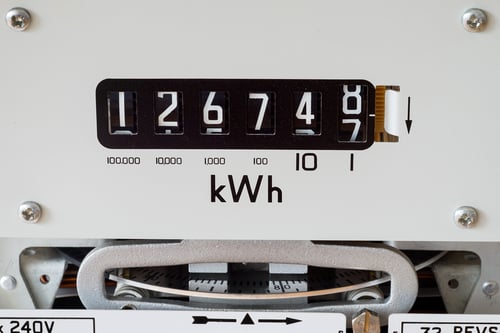Paying less for electricity is an attractive proposition for building owners and there are several ways to achieve this result. However, the most effective solutions change depending on the condition of the building, and the best recommendation is to obtain a professional assessment as a first step. All of the following options are viable approaches to reducing electricity expenses in a building:
- Reducing the device usage schedule. This can be done manually, but time and occupancy controls are also available.
- Reducing the intensity of device use. For example, air conditioning costs can be reduced by setting the thermostat a little higher.
- Energy efficiency measures, allowing building systems to perform the same functions with less energy consumption.
- Generating electricity on-site as long as the cost per kilowatt-hour remains below the local utility rate
- Demand-side management or demand response. With some types of electricity tariffs, savings are possible by shaping consumption in a way that minimizes payments.
The first two approaches are easy to implement when a building has wasteful habits, such as leaving certain light bulbs on all the time or using air conditioners on full power all summer. However, once the schedule and intensity of device use are optimized, further savings with this approach are only possible at the expense of performance and comfort.
Energy savings must be achieved without a negative impact on other aspects of the building's performance. In fact, many electricity-saving upgrades often improve building systems, improving aspects such as temperature control and outdoor air supply.
Carry out an energy audit and reduce your electricity costs.
Finding the best energy efficiency measures for a building
Many suppliers offer products with prescriptive energy savings, such as light bulbs with a specific energy savings percentage. However, these savings are based on the construction conditions assumed by the manufacturer, which may not correspond to the actual needs of your property. An energy audit is strongly recommended to get a clear picture of the energy saving potential in your building:
- An audit can identify the energy efficiency measures with the biggest electricity savings per dollar spent upfront.
- At the end of the audit you get a list of measures, compared based on their effectiveness. This way, you will be able to allocate the available budget among the most effective ones.
An energy audit can also be used as a reference when comparing financing options for building upgrades. If you plan to implement energy efficiency with debt financing and the resulting savings are greater than the loan payments, the project may pay its own costs.
Although each building is unique, some energy efficiency measures are useful in a wide range of projects. Following are some examples:
- LED lighting often achieves large savings over its initial cost, allowing for a quick payback period. Furthermore, if you purchase products from established manufacturers, your investment will be protected by a solid warranty.
- For most buildings, air conditioning represents the biggest energy expenditure during the summer. Upgrades that improve the cooling efficiency of your space typically have an attractive return on investment.
- Pumping and ventilation also represent a significant electricity consumption. High-efficiency motors and speed controls can greatly improve the performance of these building systems.
Electricity Generation for Self-Consumption

There are many technologies that can generate electricity, and your local utility's power supply likely comes from a combination of sources. Some power generation systems are only profitable on a large scale, which limits their usefulness as a local source of electricity for buildings. However, many generation systems are viable on a small to medium scale and can be deployed in buildings to reduce net consumption billed by the local utility.
In general, local power generation works when it is a cheaper option than buying electricity from the grid.
- If your electric company charges 25 cents/kWh and a solar power system results in an average cost of 10 cents/kWh, the potential savings are significant.
- On the other hand, a diesel generator with an operating cost of more than 30 cents/kWh cannot achieve savings. It is only viable as a backup power source during blackouts and other emergencies.
As in the case of energy efficiency measures, the best energy production system can change depending on the conditions of the building. However, solar energy is the most flexible and versatile option for most buildings: a photovoltaic array only needs an adequate area with sunlight and its maintenance needs are minimal. Natural gas-fired microturbines are also emerging as a viable option for buildings, and can provide combined heat and power.
Demand Side Management
Some electricity tariffs allow savings due to the way they are structured. There is a wide variety of tariffs in the US, but there are two main scenarios that allow for savings:
- Owners of buildings subject to demand charging can reduce their bills by avoiding “peaks” in electricity consumption. This can be achieved with intelligent load scheduling, on-site generation or energy storage.
- Owners of buildings subject to time-of-use electricity rates can minimize consumption at times of day when rates are high, and take advantage of times with lower kWh prices.
In both cases, the basic principle is to shape electricity consumption in such a way that the electricity bill is minimized. Depending on the tariff applied, the objective is to avoid peaks in demand or minimize the consumption of expensive kilowatt-hours.
Final Recommendation
There are many ways to reduce electricity costs, but the best option changes depending on building conditions. For example, demand-side management has little application when there are no demand charges and the kWh price is constant throughout the day.
The ideal combination of energy efficiency measures and on-site generation changes depending on a building's physical characteristics and intended occupancy. For example, the operating hours of lighting and air conditioning are very different between residential and commercial buildings, and the corresponding savings also behave differently.

